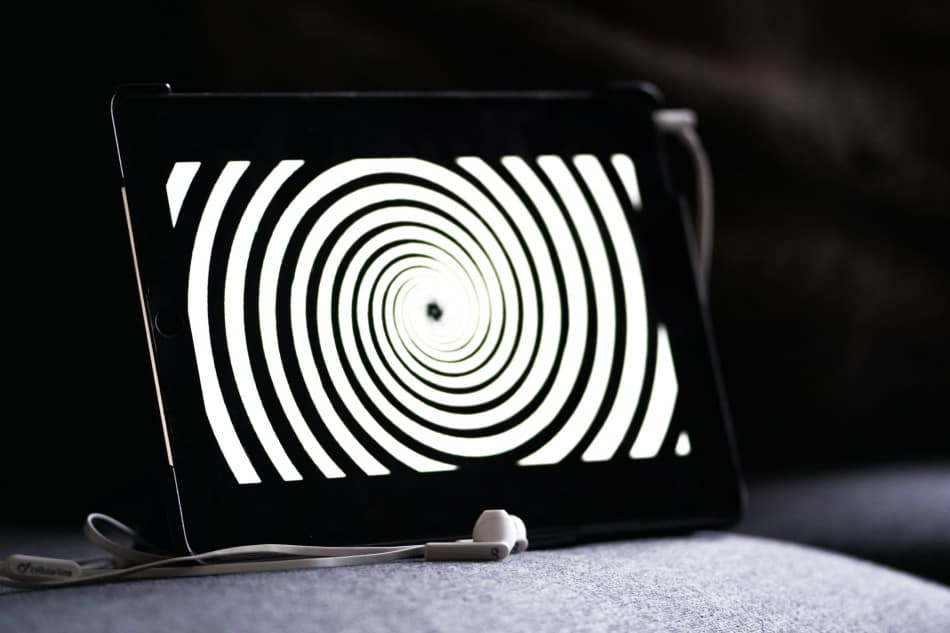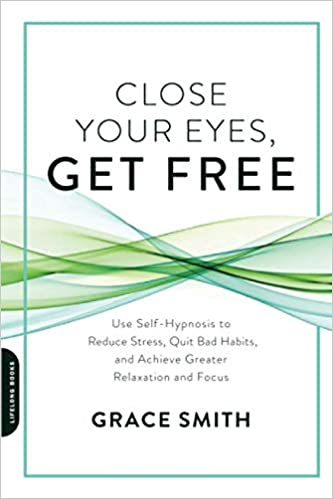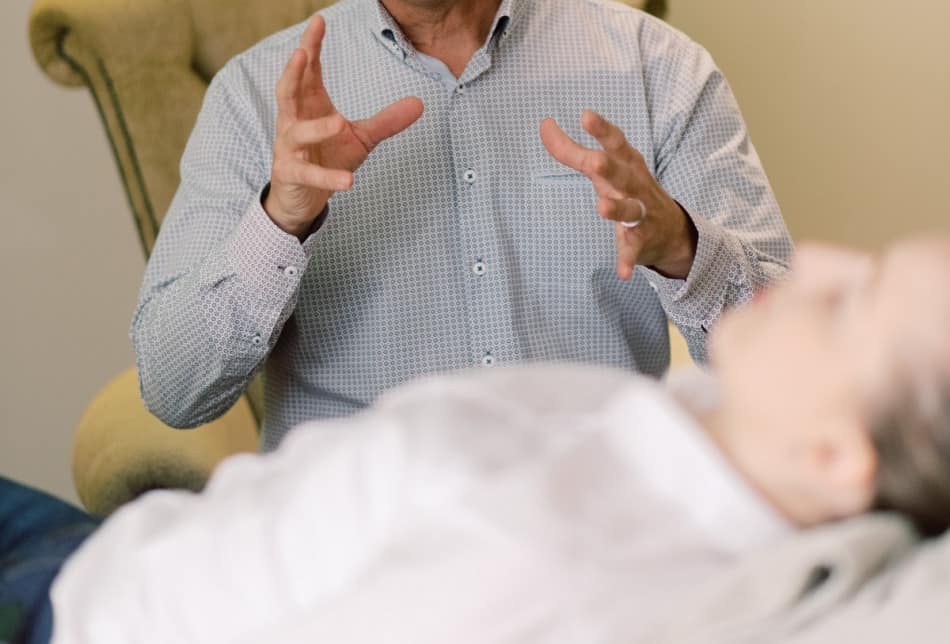Hypnosis is one of the most debated topics in psychology. Some think its positive effects are purely placebo, and even those thinking that hypnosis is a legit practice don’t agree on many issues.
Because of that, you can find a lot of contradictory information about hypnosis and how to learn it. As a result, you might doubt that hypnosis can be self-taught. So, can it?
Yes, hypnosis can be self-taught, but it depends on the exact technique of hypnosis that you want to learn. Some types of hypnosis, or more specifically hypnotherapy, cannot be self-taught because it requires you to become a psychotherapist. However, self-hypnosis can be self-taught by practicing and reading books.
If you’re interested in learning about self-hypnosis on your own, this article is just for you.
We’re going to cover everything, from the origins and types of hypnosis to what makes up self-hypnosis and some of the most frequently used techniques for hypnotizing yourself and making suggestions.
-> Read Also What Is An Autodidact?
What Is Hypnosis?

The origins of hypnosis can be traced back to the 18th century when German physician Franz Mesmer developed his theory of mesmerism. It aimed to treat people by redistributing the magnetic fluid inside a patient’s body.
While now we clearly know that it was completely bogus, it led to the development of hypnosis and hypnotherapy, which are backed by science. These two words sound similar, but they aren’t the same thing.
Hypnosis is a condition of hyper-focus and deep relaxation, which opens up your mind to suggestions that can improve your mental health. Hypnotherapy is a full-pledged psychotherapeutic practice that utilizes hypnosis.
As a result, hypnosis, or more specifically self-hypnosis can be self-taught, while hypnotherapy requires you to be formally educated.
Here’s a comparison table between self-hypnosis and hypnotherapy:
| Self-Hypnosis | Hypnotherapy |
| You Are The One Hypnotizing Yourself | Hypnotherapist Hypnotizes Another Person |
| One Fundamental Method | Many Different Methods |
| All Techniques Follow The Same Structure | Each Method Has Its Own Procedure |
| Can Be Self-Taught | Cannot Be Self-Taught; Requires Formal Education |
This being out of the way, we can take a look at the 4 general steps that nearly every self-hypnosis technique follows.
General Steps for Self-Hypnosis

Regardless of what kind of method, approach, or technique you’re going to use for self-hypnosis, there are main guidelines that you must successfully follow to be effective.
They originated from the work of 20th-century French psychologist Émile Coué, who developed what’s called “autosuggestion”.
Self-hypnosis requires you to relax to the point of reaching the state of hypnosis, where your mind is malleable and open to what’s called “suggestions”, which can take many shapes and forms, but most commonly verbal affirmations.
When you’re hypnotized, you start suggesting to your mind things that you want to improve or get rid of.
Your open mind soaks up those suggestions and in a way reprograms itself according to the suggestions.
So, the 4 general steps that nearly all self-hypnosis consists of are as follows:
1. Motivation
You have to feel the need for self-hypnosis for it to be effective. It includes being motivated in helping yourself but also believing that it’s possible in the first place.
Skepticism is the main enemy of self-hypnosis, and you must trust the power of suggestion for it to work.
2. Relaxation
To open your mind to suggestions, it has to be open and relaxed. Before self-hypnosis, guarantee that you have more than enough time for it without any distractions.
Knowing that you have as much time as you need will naturally make you relaxed and calm, minimizing anxiety.
Additionally, find the best spot for self-hypnosis and make yourself comfortable with blankets or pillows.
Your mind can only be calm if your body is relaxed, so it’s important that you’re as physically comfortable as possible.
3. Focus on the Suggestion
After reaching the relaxed state of hypnosis, you should focus on the suggestion of what you want to change.
Be it breaking a bad habit like smoking cigarettes, or increasing self-love, focus all your mental efforts on that suggestion and don’t let it slip away.
Control your mind and aim it just at the suggestion.
4. Return From Hypnosis
When you start to feel that you’ve achieved enough with this session, start returning to a normal state of alertness.
Don’t push the previous step too far and try to force your focus on the suggestion if it’s just not happening.
It’s always better to stop the hypnosis on your own conscious will and start returning to your usual state of mind.
Essentially, self-hypnosis consists of getting into the altered state of mind and then focusing on the suggestion.
Having covered this, we can move on to some of the most prominent self-hypnosis techniques and methods that you can practice on your own without leaving home.
Types of Self-Hypnosis
Self-hypnosis isn’t an exact science, so there isn’t a single number of self-hypnosis types that everyone agrees on.
However, there are some of the most popular types and techniques for self-hypnosis, that can not only be effective but also easy to learn on your own.
-> Learn More about Self-Learning vs. Classroom Learning: Which Is Better?
Guided Self-Hypnosis – A Standalone Technique
This might be the most popular way of self-hypnosis. It’s because it’s a standalone technique that’s extremely easy to practice, as all you have to do is to relax, play the audio of your choice and follow its directions.
It fulfills both components of self-hypnosis on its own – hypnotizing you and making suggestions.
There are many websites that offer free audio for self-hypnosis. They’re usually sorted by the type of suggestions or your desired outcome of the hypnosis.
This is the technique we recommend trying first because all it requires from you is to relax and go with the flow.
Body Scan – A Technique To Get Hypnotized
This is a slightly more advanced technique that’s used for getting into an altered state where your mind can accept suggestions.
You can either sit with your back straight or lie down on your back.
Then, softly close of eyes and begin “scanning” your body from the top of your head to your foot, feeling each and every arising sensation along the way.
As you reach the end of your toes, start scanning back to the top of your head. Repeat the scanning until you’re in an altered state of mind, then start working with the suggestions.
This technique is very reminiscent of mindfulness practice in various types of meditation.
Self-Hypnotic Visualization – Can Be Used For Both, Getting Hypnotized and Making Suggestions
You can use visualization for both, entering the altered state of mind or as a vehicle for suggestions.
For example, you can imagine a place that you know really well, like your bedroom, and start going through every object there, focusing on every minuscule detail you can remember.
Going through the entire place this way will sooner or later put you into hypnosis. On the other hand, you can visualize your suggestions when you’ve reached the hypnotic state through other methods like a body scan.
Think of scenes and imagery that you’d want to experience. For example, if you want to get rid of social anxiety, you can visualize having fun at a huge party full of strangers.
Now that we’ve covered some of the most popular techniques for both, getting into hypnosis and making suggestions, we can move on to the recommended reading list that will help you master the craft of hypnosis.
-> Learn more about the 7 best websites for self-learning
Books For Learning Hypnosis

There are dozens of great books on both, hypnotherapy techniques and self-hypnosis that can help you achieve better results in your personal practice.
While you can’t learn hypnotherapy on your own, reading about it can improve your self-hypnosis technique and help make it more potent.
If you really want to better your life using this method, studying books is the best way for increasing your odds of successful self-hypnosis.
Here’s a list of some of the best books that we recommend you read in no particular order:
1) Instant Self-Hypnosis: How to Hypnotize Yourself with Your Eyes Open by Forbes Robbins Blair

This is one of the most unique self-hypnosis books because, in addition to explaining how self-hypnosis works and what it can do, it also serves as a self-hypnosis tool itself.
While most other books detail techniques and approaches you can use to self-hypnotize, Instant Self-Hypnosis helps you to do it while reading the book.
That’s right, this work by Forbes Robbins Blair is a tool for self-hypnosis, and you don’t even have to put the book down to start practicing it.
2) How To Master Self-Hypnosis in a Weekend: The Simple, Systematic and Successful Way to Get Everything You Want by Rick Smith

This bestseller was first published in 2013 but has already become a classic on hypnosis.
It’s written by a Certified Clinical Hypnotherapist Rick Smith, who presents you with all the tools to defeat anxiety, quit addictions, and change them with positive habits.
3) Close Your Eyes, Get Free: Use Self-Hypnosis to Reduce Stress, Quit Bad Habits, and Achieve Greater Relaxation and Focus by Grace Smith

Written by one of the most popular hypnotherapists, this book offers a complete guide to self-hypnosis and describes various techniques you can use to achieve the best results possible.
4) My Voice Will Go with You: The Teaching Tales of Milton H. Erickson by Sidney Rosen

Milton H. Erickson is one of the most influential figures in hypnosis. He developed his own method called Ericksonian hypnosis, which approaches suggestion in a completely opposite manner to most other methods.
Instead of explicit suggestion, Ericksonian hypnosis utilizes indirect or implicit suggestion which takes the shape of stories and metaphors.
This book by Signey Rosen is full of fascinating anecdotes and nuggets of knowledge about this type of hypnotherapy.
5) Trance-formations: Neurolinguistic Programming and the Structure of Hypnosis by John Grinder and Richard Bandler

This is one of the most popular books among hypnosis enthusiasts that want to learn more about the neurolinguistic programming technique.
It presents its structure in detail and tells interesting real-life case studies of it being used on various patients.
Now that you know which books you should consider reading, we can briefly look at what types of health problems self-hypnosis is proven to help.
Health Benefits of Self-Hypnosis

You can use self-hypnosis to achieve basically any result you want. It’s because self-hypnosis utilizes the power of your mind, which has nearly limitless potential.
Just to give you an idea, here’s a list of some of the most common problems that people deal with using self-hypnosis:
Anxiety
Whether you suffer from social or general anxiety, using self-hypnosis is a great way to lessen your symptoms and start dealing with this issue.
Use various suggestions in the form of affirmations that you’re confident and carefree, or visualize having fun with foreign people.
Pain
Regardless of the type and intensity of your pain, self-hypnosis is found to alleviate pain on its own.
While you shouldn’t ignore the pain of unknown causes and in such cases must visit a doctor, you can use self-hypnosis to help with pain whose cause is known.
Keep in mind that self-hypnosis is not a replacement for medicine, and if you’re prescribed certain drugs you should keep taking them as your doctor advises.
Headaches, joint, and back pain are some of the most common ones that people get rid of with self-hypnosis.
Depression
Once again, if you’re feeling depressed, you should see your doctor, but if you’re already diagnosed and following a treatment plan, you can practice self-hypnosis to improve your mental state and get rid of depression or its symptoms.
Frequently Asked Questions
Q.1. Is Self-Hypnosis Dangerous?
A. Most techniques are completely risk-free and there isn’t a risk of doing harm. However, it’s possible to worsen your condition if you’re using negative suggestions, so always be cautious and mindful of your self-hypnosis practice.
Q.2. How Quickly Can I Learn Self-Hypnosis?
A. Mastering self-hypnosis is a life-long journey, but most people notice positive results just after a single self-hypnosis session. Just keep working on your technique and you’ll improve faster than you can notice.
Final Thoughts
As you can see, hypnosis is a complex practice that has many shapes and forms. While you can’t learn hypnotherapy on your own, self-hypnosis is an easy and relatively straightforward approach that can be self-taught at home.
We recommend you practice daily and read as much as you can to achieve the best results possible.






